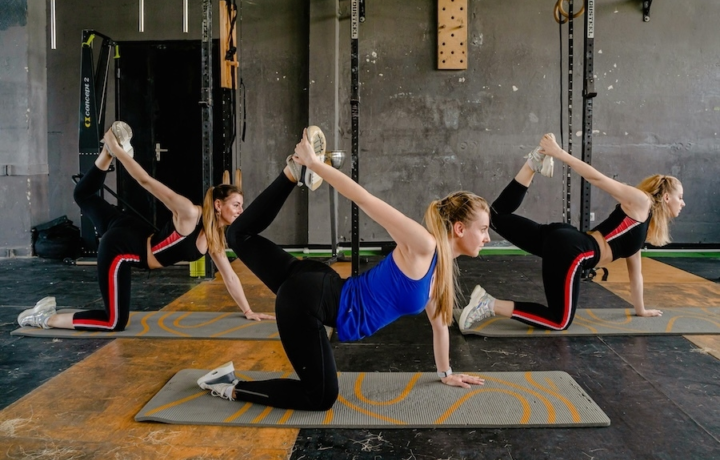Exercise
Roll Ball Infraspinatus Stretch

Roll Ball Infraspinatus Stretch
How to Perform
- Lie on your side with your knees bent at a 90-degree angle and a small exercise ball beneath your top arm's shoulder joint.
- Position your top arm at shoulder height with your elbow bent at 90 degrees, keeping your forearm perpendicular to your torso.
- Roll your body weight slightly onto the ball, allowing it to press into the back of your shoulder where the infraspinatus muscle is located.
- Breathe deeply and relax into the position, maintaining contact between the ball and the targeted area just below your shoulder blade.
- Slowly extend your top arm forward while keeping pressure on the ball, intensifying the stretch in your infraspinatus muscle.
- Hold this extended position for 20-30 seconds while continuing to breathe normally, allowing the muscle to release tension.
- To increase the stretch, gently rotate your arm inward while maintaining the extended position and pressure on the ball.
- Return to the starting position and repeat 2-3 times before switching to the other side, maintaining core stability throughout the exercise.
Important information
- Adjust the ball position until you feel a targeted stretch in the back of your shoulder rather than discomfort or pain.
- Keep your neck in a neutral position throughout the exercise to prevent unnecessary strain.
- If you experience any sharp pain or tingling, immediately reduce pressure or stop the exercise.
- Make sure to breathe continuously during the stretch to help muscles relax and maximize the effectiveness of the stretch.

Roll Ball Infraspinatus Stretch
Exercise Details
Primary Muscles
Muscle Groups
Mechanic
Risk Areas
Built for progress
Take the guesswork out of training
Create personalized AI-powered workout plans that evolve with you. Train smarter, track every rep and keep moving forward, one workout at a time.






The Roll Ball Infraspinatus Stretch is a gentle yet effective mobility technique that targets the often-neglected infraspinatus muscle, which plays a crucial role in shoulder health and rotation. Perfect for beginners, this accessible stretch requires minimal equipment—just a small therapy ball or tennis ball—making it ideal for home workouts or gym sessions alike.
This stretch primarily focuses on releasing tension in the rear deltoids and latissimus dorsi (lats), two muscle groups that commonly develop tightness from daily activities like sitting at a desk, driving, or even from intense upper body training. When these muscles become restricted, they can contribute to poor posture, limited range of motion, and potential shoulder impingement issues.
What makes this stretch particularly valuable is its versatility within a fitness routine. It works beautifully as part of your warm-up sequence, preparing the shoulder complex for more dynamic movements by increasing blood flow and tissue temperature in the targeted area. Equally, it serves as an excellent cool-down component after training, helping to alleviate post-workout tightness and promoting faster recovery.
The Roll Ball Infraspinatus Stretch falls into both the stretching and mobility categories, offering a unique combination of myofascial release and passive stretching. The pressure of the ball helps break up adhesions in the fascia surrounding the infraspinatus, while the positioning creates a mild stretch that encourages greater tissue elasticity. This dual action makes it more effective than traditional static stretching alone.
Regular implementation of this stretch can contribute to improved shoulder mechanics, better posture, and reduced risk of injuries in overhead movements. Many fitness enthusiasts find that incorporating this simple technique two to three times weekly leads to noticeably improved shoulder mobility and decreased tension in the upper back region. The gentle pressure stimulates proprioceptors in the muscle tissue, effectively "teaching" chronically tight muscles to release and relax.
FAQ - Roll Ball Infraspinatus Stretch
This stretch primarily targets the infraspinatus muscle in your rotator cuff, while also releasing tension in the rear deltoids and latissimus dorsi. These muscles often become tight from daily activities like desk work or from intense upper body training.
For best results, incorporate this stretch 2-3 times per week, holding each position for 20-30 seconds. Consistent practice leads to improved shoulder mobility and decreased upper back tension over time.
Yes, you can substitute a tennis ball, lacrosse ball, or even a rolled-up sock in a pinch. The key is finding something firm enough to apply pressure but soft enough to comfortably sink into the muscle tissue.
The most common errors include shrugging your shoulders toward your ears, overarching your lower back to compensate for limited shoulder mobility, and stretching too aggressively. Focus on quality over intensity, keep your core engaged to protect your spine, and remember that consistent, gentle stretching yields better results than occasional forceful attempts.
While this is generally a gentle stretch, consult with a healthcare provider before attempting if you have existing shoulder injuries or have recently had shoulder surgery. Start with very light pressure and stop immediately if you feel sharp pain or tingling sensations.







